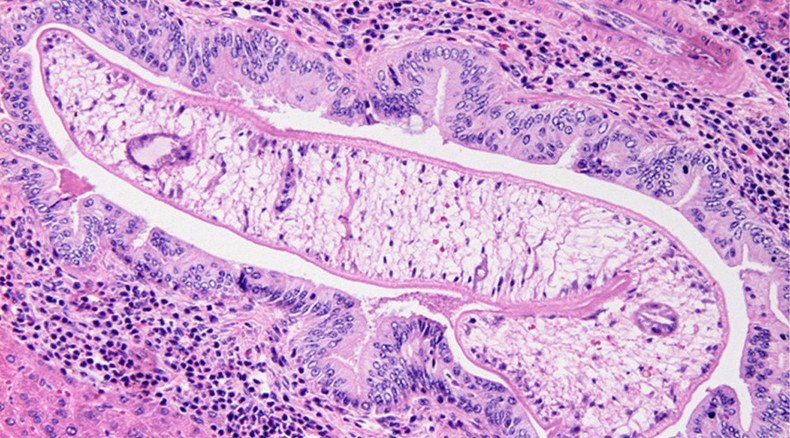'Killing with kindness': Cancer-causing worm could help heal chronic wounds, researchers say

A deadly, cancer-causing parasitic worm that infects millions of people in Southeast Asia, killing at least 26,000 each year, could help some patients recover from non-healing chronic wounds such as diabetic ulcers, Australian scientists have discovered.
A team of scientists at James Cook University (JCU) in Queensland has found that the 1cm-long Asian liver fluke, Opisthorchis viverrini, actually secretes a growth factor that can boost wound healing and blood vessel growth. Tests on mice and cell cultures showed that the healing protein could be especially useful in the treatment of chronic wounds.
Dr. Michael Smout has cautioned that the use of the protein would have to be short-term, however, because exposure over years inevitably leads to liver cancer.
“The worm is killing us with kindness,” he told AP.
READ MORE: Hail to the worm: Plastic-eating worm might be the solution to global crisis
Opisthorchis viverrini owes its reputation to a parasite-induced bile duct cancer it causes, known as cholangiocarcinoma (CCA). Humans become infected when they eat raw freshwater fish. O. viverrini can live for years in intra- and extra-hepatic bile ducts and the gall bladder, while chronic infection caused by the parasite triggers fibrosis, cholecystitis and CCA, an incurable and lethal malignancy. There's currently no anti-O. viverrini vaccine, according to researchers.
‘Kill switch’ for genetically-modified insects, bacteria developed at MIT [VIDEO] https://t.co/ecwXGjYzzH@AmeeraDavid
— RT America (@RT_America) 3 июня 2015According to Smout, the latest discovery means it’s possible the growth factor could be used to develop a vaccine against the worm-induced cancer.
“The protein is critical for the worm’s survival,” Smout said. “It seems likely a good candidate for something to stop the worm.” He added that the vaccine would also benefit those directly at risk of cancer, while the growth factor would benefit the developed world as a possible wound healing agent.
READ MORE: Pink-tongued, green alien-like worm creates a buzz in Taiwan and worldwide (VIDEO)
“Diabetes is a big problem as we live longer and get heavier,” Smout stated in the press release. “There are increasing numbers of inflammatory diseases such as diabetes and associated non-healing wounds. A powerful wound healing agent designed by millennia of host-parasite co-evolution may accelerate the impaired healing processes that plague diabetic and elderly patients.”
JCU scientists are still scrutinizing how this growth factor controls healing, noting that ultimate development of the discovery as a healing agent or vaccine may be accomplished in the near future.












